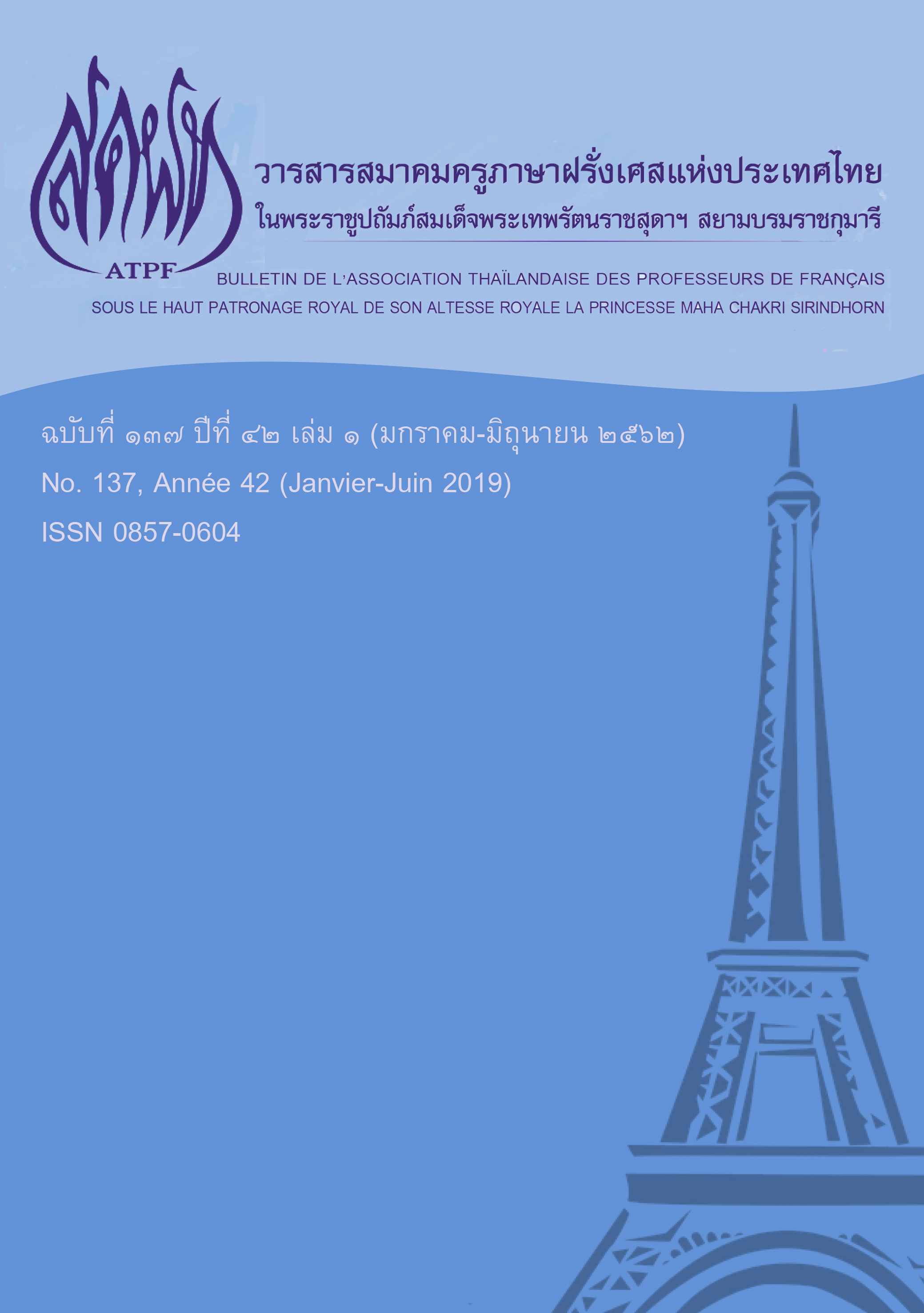An overview on Lexicon Approach in French as a Foreign Language Class (Aborder le lexique dans la classe de FLE : état des lieux et pistes à explorer)
Main Article Content
Abstract
This article is a reflection on the teaching of the lexicon in French as a Foreign Language class in a heteroglossic context. The starting idea is that the lexicon approach is one of the rarely used approaches in teaching foreign languages, paradoxically; it is often a preferred pathway to a target language by learners. With this reflection, researchers would like to attribute a modest contribution to the development of lexicon teaching in French as a Foreign Language. After recalling the complexity of the selection of content, the article proceeds an analysis of the different components of lexical skill and continues by showing the difference between the onomasiological approach and the semasiological approach. Finally, the subject of how lexicon can be taught in the classroom is mentioned. The latter addresses an overview of the main types of activity by which the lexicon can be addressed in a language class: activities in the form of words, meaning, collocation, as well as with the pragmatics aspects. The difficulties inherent in the concept of these activities are explained using many examples.
Downloads
Article Details
References
Boyer, H., & Butzbach-Rivera, M. (1979). Introduction à la didactique du français langue étrangère. Paris : Clé International.
Calaque, É. (2002). Les mots en jeux : L’enseignement du vocabulaire. Grenoble : CRDP de l’Académie de Grenoble.
Catach, N. (1984). Les Listes orthographiques de base du français (LOB) : Les mots les plus fréquents et leurs formes fléchies les plus fréquentes. Paris : F. Nathan.
Chervel, A., & Blanche-Benveniste, C. (1969). L’Orthographe. Paris : F. Maspero. Conseil de la coopération culturelle. (1976). Un niveau-seuil. Strasbourg : Conseil de l’Europe.
Conseil de l’Europe. (2001). Cadre européen commun de référence pour les langues : apprendre, enseigner, évaluer. Consulté à l’adresse https://www.coe.int/fr/web/common-european-framework-reference-languages/home
Cuq, J.-P., & Gruca, I. (2005). Cours de didactique du français langue étrangère et seconde ([Nouvelle éd, Vol. 1–1). Grenoble : Presses universitaires de Grenoble.
Galisson, R. (1991). De la langue à la culture par les mots. Paris : Clé international.
Gougenheim, G. (1958). Dictionnaire fondamental de la langue française. Paris, Didier (Mesnil, impr. Firmin-Didot et Cie).
Grossmann, F. (2011). Didactique du lexique : État des lieux et nouvelles orientations. Pratiques. Linguistique, littérature, didactique, (149‑150), 163‑183. https://doi.org/10.4000/pratiques.1732
Histoire et géographie de la couleur : langues et communication. (2008, novembre 20). Consulté 26 mars 2019, à l’adresse Langue et civilisations à tradition orale website: https://lacito.vjf.cnrs.fr/partenariat/couleur/index.htm
Saint-Dizier, P. (2006). Réseaux sémantiques - Sémanticlopédie. Consulté 15 mars 2019, à l’adresse https://www.semantique-gdr.net/dico/index.php/R%C3%A9seaux_s%C3%A9mantiques
Troubetzkoy, N. S., Jakobson, R., Jakobson, R., & Jakobson, R. (1968). Principes de phonologie ["Grundzüge der Phonologie"], par N. S. Troubetzkoy,... Traduits par J. [Jean] Cantineau,... (J. Cantineau, Trad.). Paris : Klincksieck.


